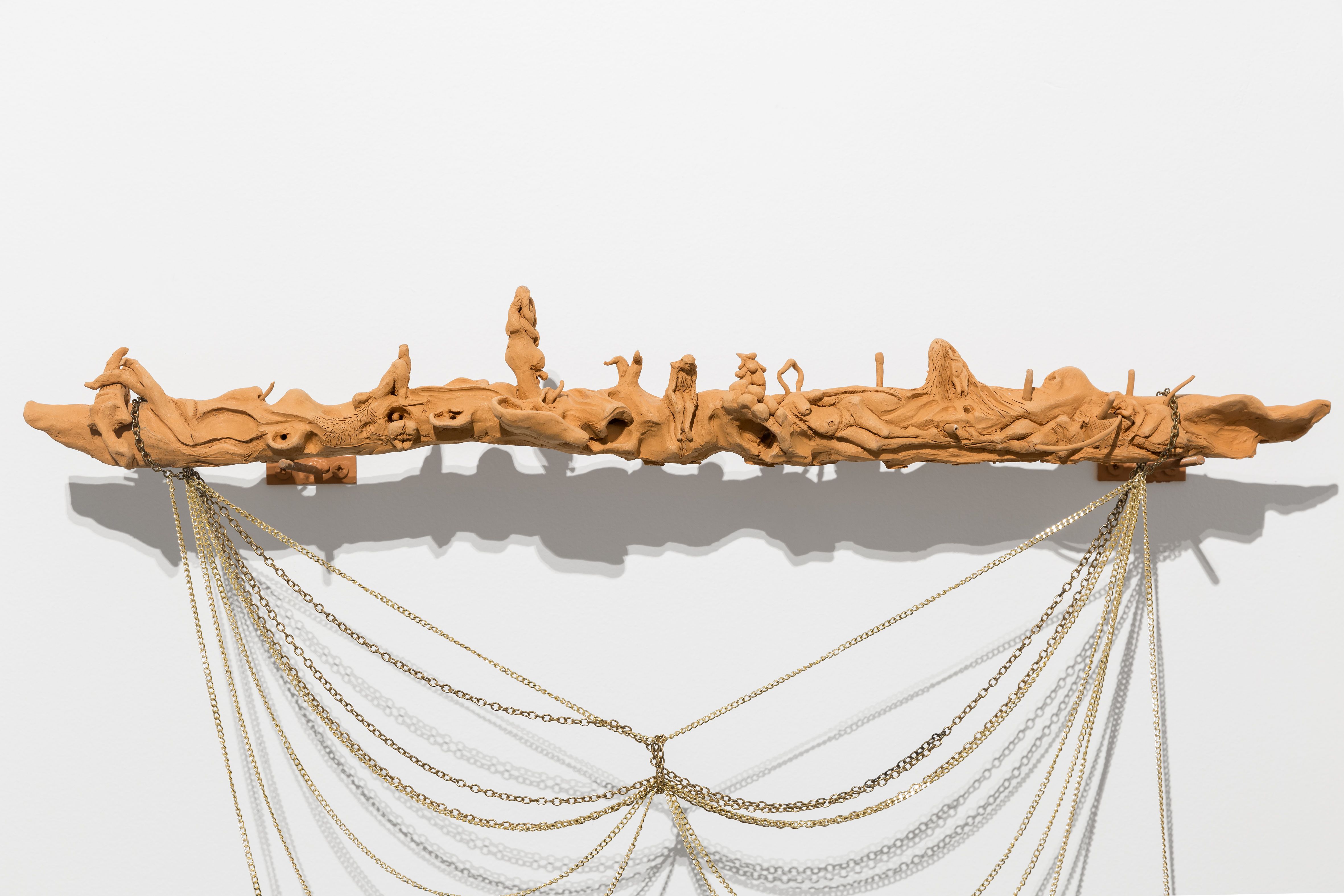

In every part of the world, as far as it was possible to reconstruct human history, there is trace of the custom of create objects, practices and formulas able to ward off malign influences. These physical or verbal instruments commonly called apotropaic instruments are an extension of a magical thinking interested in giving certainties and coherence to the great “mysteries” of life: good and evil, pain, physical and mental transformation, death.
Benni Bosetto (Merate, 1987) has always been fascinated by such dimension of human thinking and she has been studying its fundamental traits, then reconstructing a personal iconography set up intuitively and able to free itself from specific ethnographic connotations. This process takes place through a reworking of the sources which includes design, sculpture and performative actions. It is no coincidence that by observing the Bosetto’s dense notebooks we find a free handwriting where phrases are followed by sketches, as if the theoretical source were immediately translated into a personal visual note.
Quattro Bastoni (Rococò Parade) is part of a group of works that evoke instruments of a magical and religious ritualistic nature. The work consists of four sticks made of terracotta decorated with low and high reliefs adorned with chains of different lengths.
At first glance, the attention is grabbed by the chains as they seem to form the contours of body parts by tying together the ends of the sticks. Approaching each sculpture, the eye is solicited by the rhythm of the decoration, from the material background of the terracotta brings out other physical fragments, tied together in a dynamic embrace. These tangles are alternated with more defined figures captured in static positions or while performing practices or rituals.
Bosetto uses decoration recalling the stylistic revolution introduced by Rococò: it is no longer a marginal ornament, but it is a specific instrument to give vital energy to the ideal pursued in the making of the artwork. The reliefs recall those of ancient ritual objects of the propitiatory-healing type. Shepherds, prophets, saints and witches are portrayed by the tradition with sticks, sceptres, chopsticks which are symbols of spiritual maturity and instruments of power.
And if the Bosetto’s sticks were really healing instruments which malign influence would they counteract? From her first works, the artist showed an alternative to the power systems imposing uniformity that pervade the society today, from institutions to the scrolling of images on Instagram, operating unconsciously on our choices and views. The imagery of the work refers to a swarm of shapes, a dynamic and expanding body that resists to any attempt of limiting physical identity in fixed categories and taxonomies. The body that we find along the sticks is not necessarily human, it blends with the organic world.
The work creates a parade, the most widespread contemporary ritual: a celebration that frees the sacral action from the religious truths they traditionally convey, to preserve the cathartic and liminal dynamics that allow its participants to turn into a single and manifesting body.
Translated by Alessio Severo